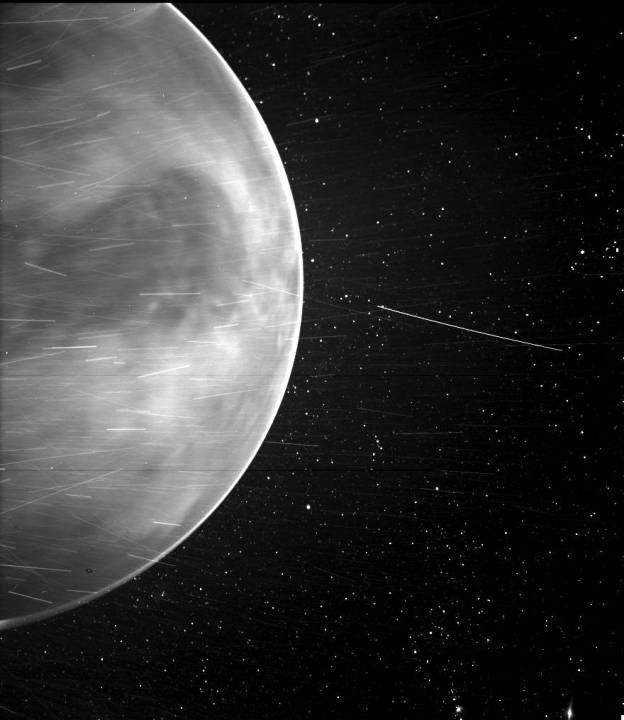
NASA has shared this gorgeous image of Venus, captured by the Parker Solar Probe on a flyby of the planet in July last year. The probe’s main mission is to explore the sun up close and learn about its corona, but it also regularly passes Venus as it uses the planet’s gravity to adjust its orbit. The researchers staffing the mission don’t let these flybys go to waste, and use the probe’s instruments to learn about Venus as well on their way by.
This image was captured by the Wide-field Imager for Parker Solar Probe instrument, or WISPR, when the probe was under 8,000 miles away from Venus. It even revealed something unexpected. Venus is covered in thick clouds and WISPR is designed to take photos inside the sun’s corona, so the researchers weren’t expecting the instrument to be able to penetrate the Venusian atmosphere. But in fact, it was able to peek through the clouds and see the planet’s surface.
“WISPR is tailored and tested for visible-light observations. We expected to see clouds, but the camera peered right through to the surface,” said Angelos Vourlidas, the WISPR project scientist from the Johns Hopkins Applied Physics Laboratory (APL), in a statement. The image shows a ring of brightness around the planet which is thought to be nightglow — a faint light emission coming from oxygen in the atmosphere.
The image of Venus looked similar to those captured by the Japanese Akatsuki mission, which images at near-infrared wavelengths. That suggests that WISPR may be able to use this unexpected ability to study dust around the sun. In addition, data can now be shared between the Parker Solar Probe and Akatsuki missions to learn more about Venus.
“We are really looking forward to these new images,” said Javier Peralta, a planetary scientist from the Akatsuki team. “If WISPR can sense the thermal emission from the surface of Venus and nightglow — most likely from oxygen — at the limb of the planet, it can make valuable contributions to studies of the Venusian surface.”
Editors' Recommendations
- What kind of view will ISS astronauts get of the solar eclipse?
- Gorgeous images show Axiom-3 crew over Himalayas on ISS approach
- Stunning image shows annular solar eclipse from a million miles away
- Solar Orbiter and Parker Solar Probe work together on a puzzle about our sun
- Pollution-tracking NASA satellite shares its first images of air quality




